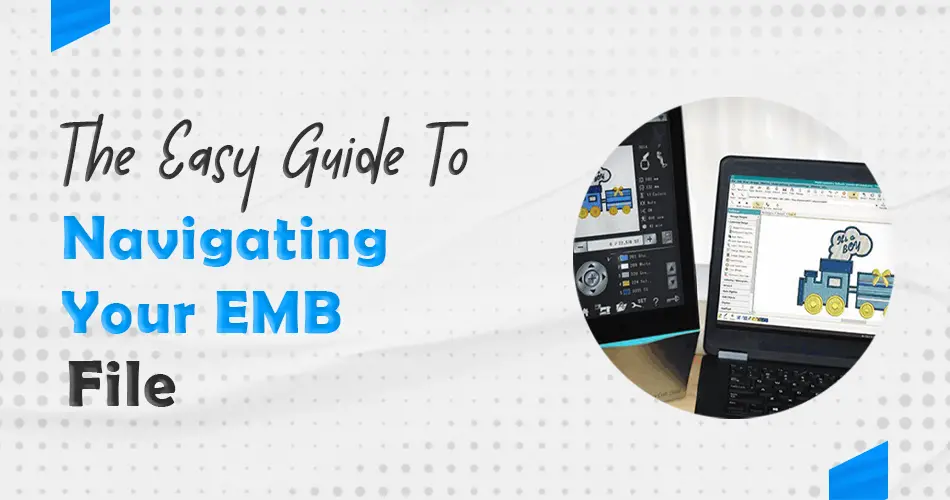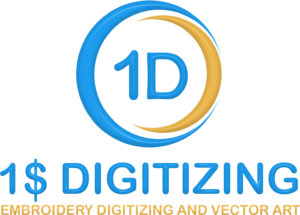Embroidery has developed with the computerized age, and with this advancement comes the need to comprehend and explore various kinds of documents, one of the most pivotal being the EMB file . Assuming you’ve as of late fiddled with advanced embroidery, you’ve probably run over this document design. It could appear to be overwhelming from the get-go, yet dread not! This guide is intended to assist you with understanding, exploring, and controlling your EMB documents easily.
Understanding What an EMB File Is
An EMB file represents a digital embroidery design’s master copy. Distinguished from other embroidery formats that cater specifically to individual embroidery machines and only carry stitch information, the EMB format goes several steps further. It not only includes details on stitch types and patterns but also houses editable information regarding color choices and design layout configurations.
This capacity for auditability makes EMB files particularly valuable within the embroidery design and digitization sector, providing a versatile foundation from which various machine-specific file formats can be derived. By supporting comprehensive modifications at the source level, EMB files enable designers and digitizers to have unparalleled control over their creative outputs, making them a preferred choice for those looking to maintain high levels of customization and flexibility in their embroidery projects.
Preparing to Work with EMB Files
Before you dive into the world of digital embroidery and start manipulating EMB files, setting up an efficient and effective workspace is key. The initial step involves installing the appropriate software that supports EMB file format, such as Embird, Wilcom, or Hatch, which are among the industry leaders. After securing the software, organize your digital space by creating a dedicated folder for all your embroidery projects; this will help keep your EMB files and related documents in order. Lastly, invest time in becoming familiar with your chosen software’s interface and functionalities. Look for online tutorials or user manuals specifically designed for your software to streamline the learning process. This foundational work ensures a smoother and more productive editing and customizing journey with your EMB files.
Editing and Customizing Your EMB Files
Embarking on the editing and customization journey of your EMB files opens a world of creative possibilities. Begin by launching your embroidery software and opening the desired EMB file for modification. Your software suite is equipped with various tools allowing for comprehensive edits, such as resizing the design, altering color schemes, incorporating or removing specific elements, and fine-tuning stitch types to your liking. As you navigate through these edits, utilize the software’s preview option frequently to verify the accuracy and appeal of your adjustments. It’s crucial to save your work periodically throughout this process to safeguard your creative progress. This approach empowers you to personalize any design to perfectly align with your vision or rectify elements that do not meet your expectations, thereby enhancing your embroidery project’s overall impact.
Converting EMB Files for Machine Use
After finalizing your design modifications, the pivotal moment arrives to transition your artwork from digital to thread. Begin this process by identifying the specific file format your embroidery machine is programmed to recognize. Armed with this knowledge, navigate through your embroidery software to find the feature designated for file conversion, often labeled as “Export” or “Convert”.
Upon locating this function, select the file format compatible with your machine. Proceed to save the newly converted file in a designated location. The last step involves transferring this machine-readable file to your embroidery device, typically achieved through methods such as USB drive, direct cable connection, or wireless transfer, depending on your machine’s capabilities. This conversion is a vital bridge, ensuring your digital designs materialize into tangible embroidery work.
Troubleshooting Common EMB File Issues
Experiencing difficulties while working with EMB file is entirely expected, yet knowing how to productively address them can have a massive effect on your weaving work process. Assuming that you’re confronting hardships opening an EMB document, it very well may be because of programming similarity issues; guarantee your product is modern by checking for any suitable updates or fixes. Ruined EMB documents are one more incessant impediment, frequently a consequence of fragmented downloads.
Endeavoring to re-download the document might determine this issue. Furthermore, issues might emerge following the transformation of EMB records to a configuration viable with your weaving machine. On the off chance that the result configuration doesn’t match your assumptions, check that you have picked the right document design for your machine and that no plan components were coincidentally modified or discarded during the change interaction. These systems can assist you with conquering the most well-known obstacles experienced with EMB records, working with a smoother weaving configuration experience.
Conclusion
Mastering the intricacies of EMB file can dramatically elevate your digital embroidery projects, transforming them from simple designs to intricate, customized works of art. By equipping yourself with the necessary software, familiarizing yourself with its functionalities, and practicing the art of editing and converting EMB files, you’ll unlock a new realm of creative potential. While challenges may arise, the strategies provided will guide you through common pitfalls, ensuring a seamless design process. Embrace this journey of discovery and innovation in the digital embroidery landscape, and watch as your designs come to life with precision and flair.




